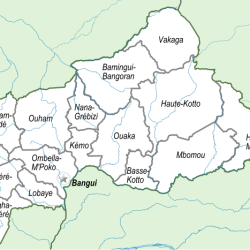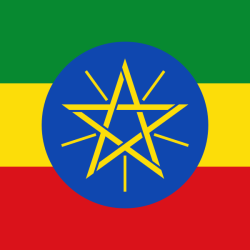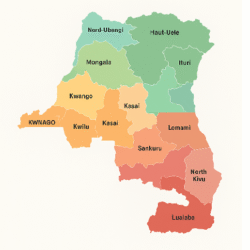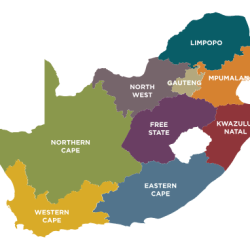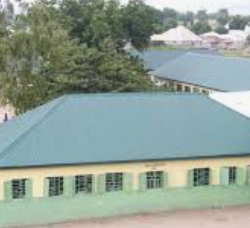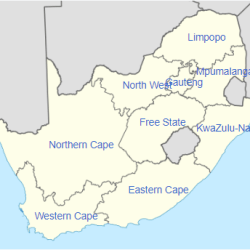Central African Republic map with the prefectures and Bangui, the capital



Central African Republic is divided into 20 administrative prefectures, two of which are economic prefectures; the prefectures are further divided into 84 sub-prefectures.
The 20 prefectures (states) of Central African Republic are:
- Ombella Mpoko
- Lobaye
- Sangha-Mbaéré
- Mambéré-Kadéi
- Mambéré
- Nana-Mambéré
- Ouham-Pende
- Lim-Pende
- Ouham
- Ouham-Fafa
- Kemo
- Nana-Gribizi
- Bamingui-Bangoran
- Ouaka
- Haute Kotto
- Basse-Kotto
- Mbomou
- Haut Mbomou,
- Vakaga
- Bangui
More on Central African Republic
Central African Republic (CAR) is a country in Central Africa. It is bordered by Chad to the north, Sudan to the northeast, South Sudan to the east, the Democratic Republic of the Congo to the south, the Republic of the Congo to the southwest, and Cameroon to the west.
Bangui is the country’s capital and largest city.
Capital: Bangui
Population (2023): 6,1 million




Bangui is located at the border of the Democratic Republic of the Congo.
The Central African Republic covers a land area of about 620,000 square kilometres (240,000 sq mi). As of 2021, it had an estimated population of around 5.5 million.
Most of the Central African Republic consists of Sudano-Guinean savannas, but the country also includes an equatorial forest zone in the south.
Two-thirds of the country is within the Ubangi River basin (which flows into the Congo), while the remaining third lies in the basin of the Chari, which flows into Lake Chad.
The country’s borders were established by France, which ruled the country as a colony starting in the late 19th century. After gaining independence from France in 1960, the Central African Republic was ruled by a series of autocratic leaders.
By the 1990s, calls for democracy led to the first multi-party democratic elections in 1993. Ange-Félix Patassé became president, but was later removed by General François Bozizé in the 2003 coup.
The Central African Republic Bush War began in 2004 and, despite a peace treaty in 2007 and another in 2011, civil war resumed in 2012. The civil war perpetuated the country’s poor human rights record: it was characterized by widespread and increasing abuses by various participating armed groups, such as arbitrary imprisonment, torture, and restrictions on freedom of the press and freedom of movement.

